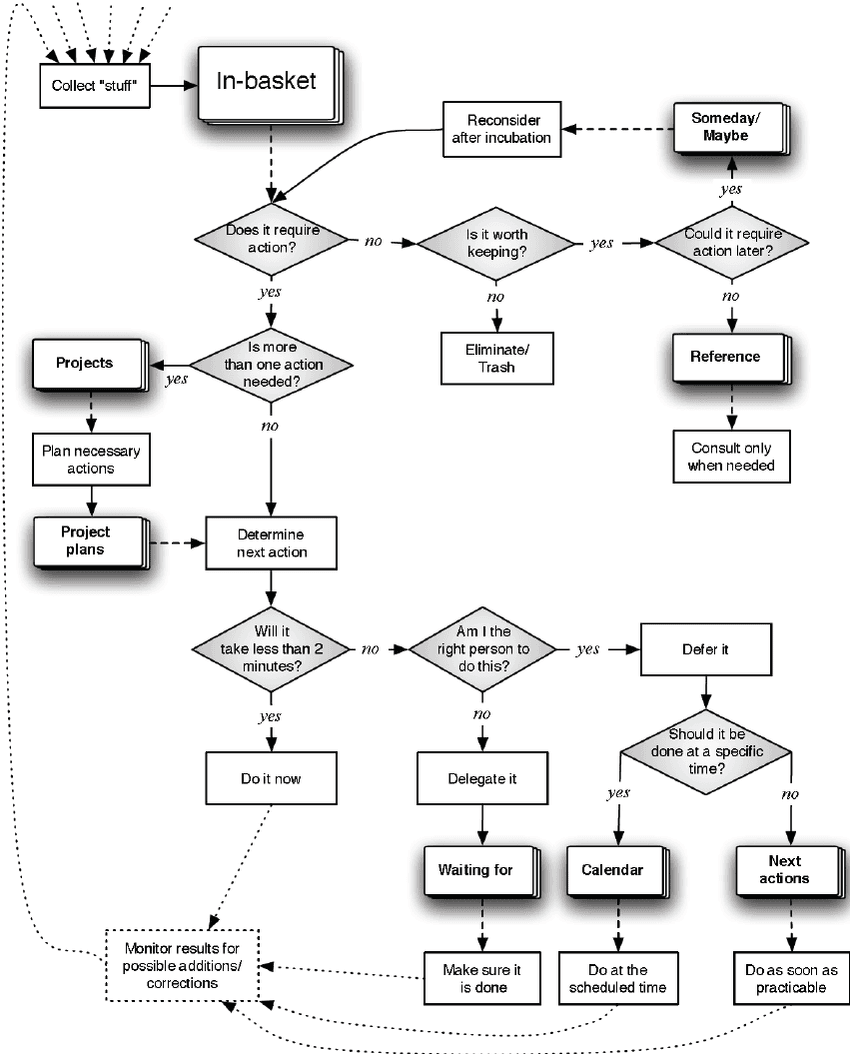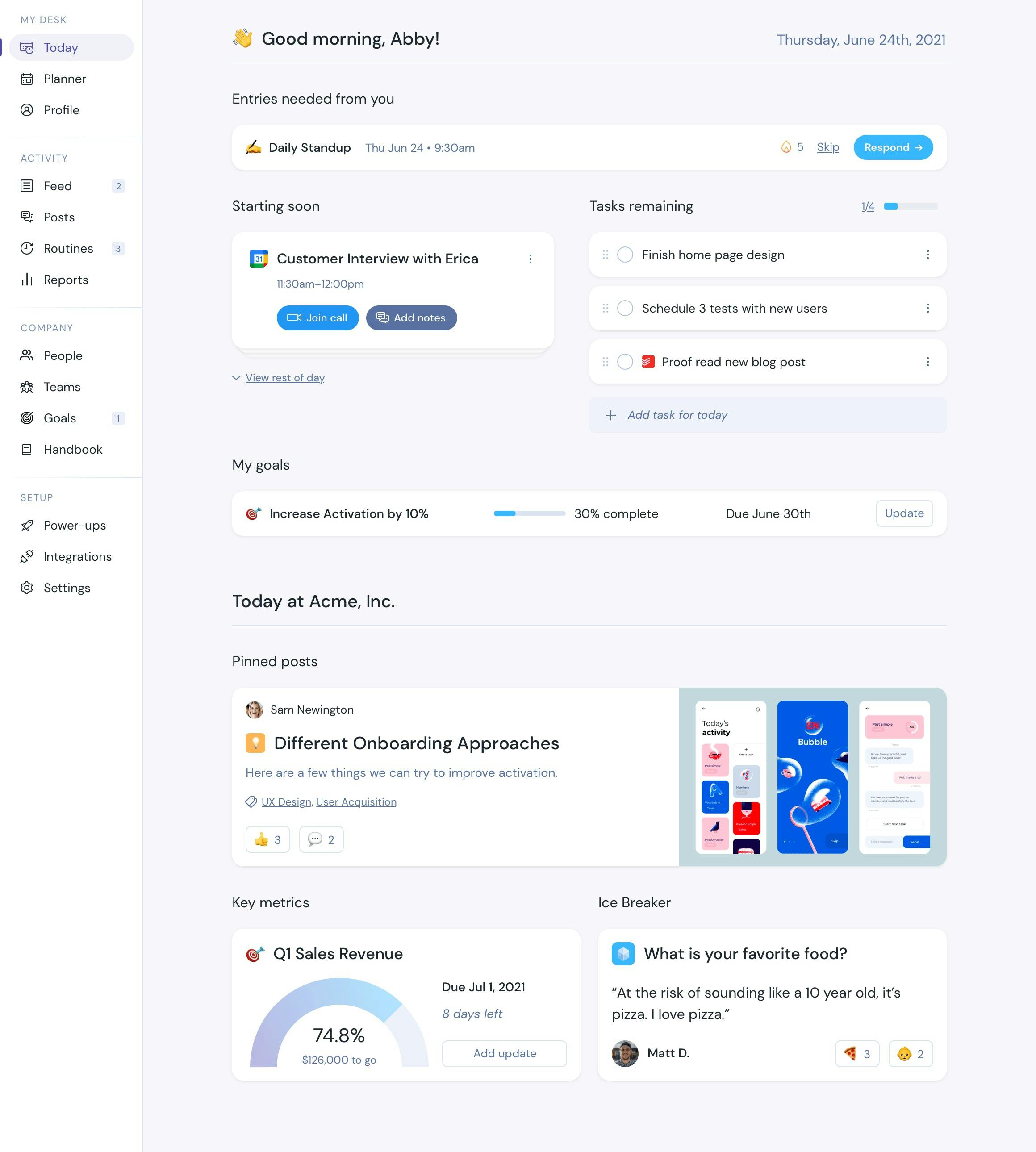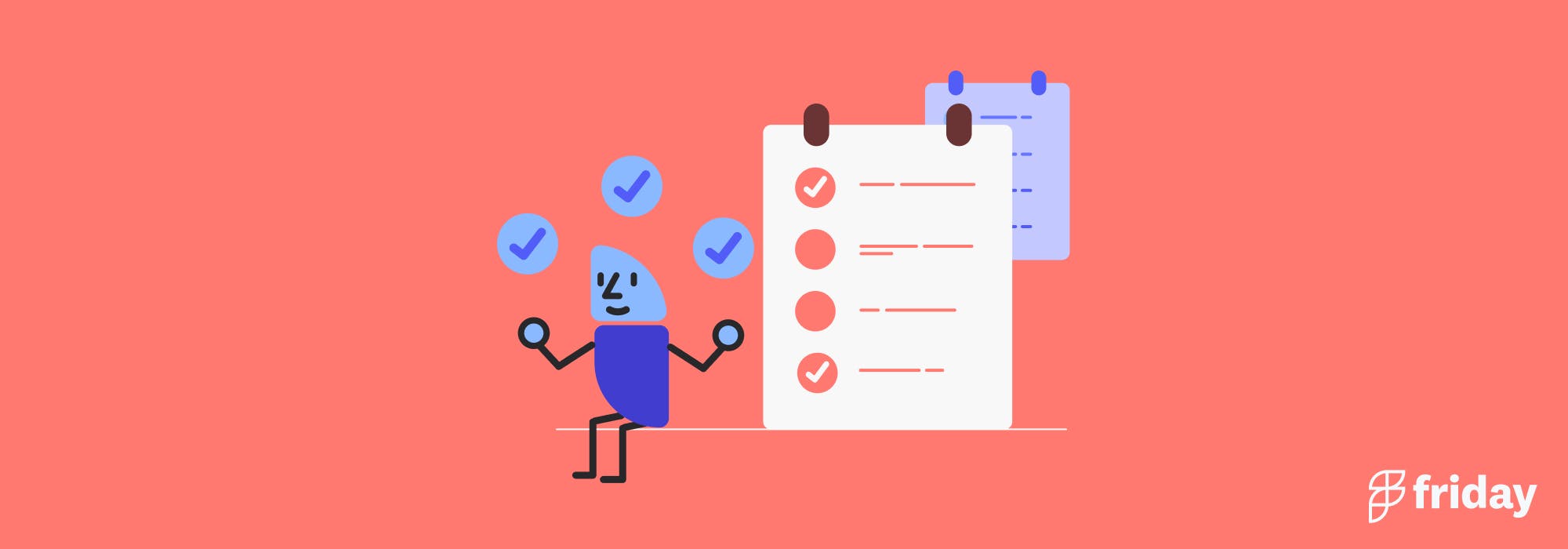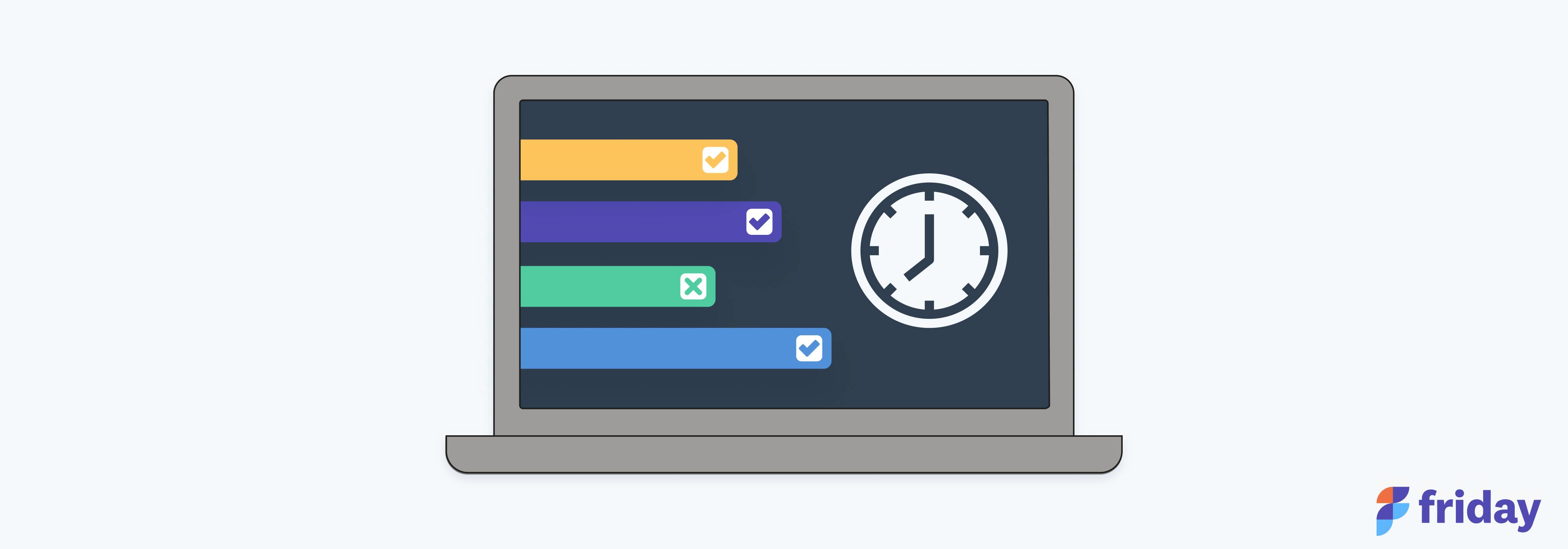The GTD Method: Use Getting Things Done to Achieve Your Goals

As holistic as many productivity practices claim to be, they often exaggerate their usages and stretch their capabilities. However, as a man who confesses to have had 35 jobs by the age of 35, David Allen, creator of the Getting Things Done (GTD) method, had accumulated a wealth of knowledge before finalizing his technique.
Impressively applicable to all sorts of situations, and downright seductive in the eyes of logic-lovers and the systemically-minded, GTD is astoundingly relevant and useful. The ultra-successful all speak of their refined methods of managing time and prioritizing tasks... and the GTD method is no exception, though it does take some getting used to.
What is the GTD Method?
GTD is neither a fancy cocktail nor some rare medical condition, but simply a personal productivity system that stands for getting things done. It’s a powerful, time-tested personal productivity method, established by David Allen, American author and productivity consultant, in the 2001 book Getting Things Done: The Art of Stress-Free Productivity.
Unlike other techniques, the GTD approach features impressively logical task-management, which is sometimes mistaken as unattractively technical; however, thousands of ordinary folk have seen that GTD can enact positive change in their lives, the main idea being to eliminate stress caused by information overload. Allen’s philosophy rests on the notion that this greater control over your work will improve efficiency and reduce stress.
The GTD overview is based on five principles:
1. Capture everything that is on your mind and relevant (“stuff”)
2. Clarify the relevance/importance of the “stuff” by asking the set questions
3. Organize stuff into their relevant folders:
- Projects (require more than one actionable task)
- Immediate action (takes less than 2 minutes)
- Delegated (add to “Waiting for” list)
- Deferred/Scheduled (do it later)
- Someday (could be worth doing later)
- Eliminated (not worth doing ever)
4. Reflect on your “stuff” that you have captured and clarified
5. Engage in regular review and maintenance (Allen encourages users to think about their emotional experience upon finishing a task)
If that all seems a little confusing, here’s a visual representation where it all starts:

Asking yourself these simple questions transfers your internal goals, thoughts and worries into an external place, as a means to free up your mind and allow for greater focus on the next action.
What Are the Main Benefits of the GTD Method?
Strap in, because there are many benefits of the Getting Things Done productivity method. The most prominent ones are:
- Clarity: This is the main benefit of the GTD method, and indeed what the system was actually designed to do, to achieve maximum clarity. It’s all about knowing what you have to do and when you have to do it. This is a crucial benefit for people who want to achieve maximum productivity
- Reduced Stress and Anxiety: Another core reason for GTD is the reduction of the stress that comes with the clarity you receive. This can be applied to both professional and personal life. By saving you from harmful information overload, the method eliminates stress through a healthier task-management practices, improving wellbeing and productivity
- Focus: The Getting Things Done approach helps you focus on one task at a time, single-tasking, which is proven to be the most efficient manner of working. It’s simple: when you commit to one thing, you get it done faster, making you ultimately able to commit to a greater number of tasks
- Control: Part of the later reflect and engage stages of GTD rest on gaining control over your life, most notably by making sure you don't fall victim to the stress of often overbearing modern pace. Prioritizing allows you to filter the most vital information from your life.
- Time management: As with many productivity tools, the GTD method helps you manage time more effectively. By promoting single-tasking and the constant evaluation of whether your tasks are worthwhile, you spend your time the best possible way. At the same time, such a logical organizations reduces procrastination, so you can achieve maximum productivity
What Are The Steps of the GTD Method?
Unlike top-down planning, starting with an ultimate goal before breaking it into subgoals and respective actions for their fulfillment, the GTD method is a bottom-up system. This means you begin with smaller, manageable goals before working up to the larger goals those tasks may be representative of... sort of like the snowball effect, getting larger and gaining momentum as you go.
The main advantage of this style is that GTD is specifically designed to seamlessly integrate into everyday life, where you can apply it to everything, however seemingly insignificant. Therefore, when any stuff enters your life – amassed in what Allen calls the inbox – you can follow the same clarification steps, regardless of their context, effectively automating your day for more efficient cognitive performance.
1. Capture Your Thoughts
The only way you can benefit from the GTD method is to first get all of your ideas, tasks and aims actually into the system, your inbox. You can use any manner of capturing thoughts and ideas, for example some rapid logging in your bullet journal daily spread, or a good old-fashioned to-do list.
Use a notebook, a computer, a smart phone, a whiteboard or any other tool. The important thing is to use the tool which is most comfortable for you. While Allen had originally encouraged the use of paper formats, i.e. a physical in-tray, his updated 2015 publication absorbs many of the technological advancements made since original release, so you’re free to use a digital platform (like Friday!) for getting things done!
2. Clarify Them
Once you’ve captured everything you think you have to do, you’ll need to clarify each to determine the order in which you do them (now, set time, someday, never) and how they get done (self, delegate).
If your goals require more than one actionable step, you’ll need to separate each of them. Think of the GTD flowchart as tubes where these small blocks of action can fit through, but the larger chunk that is the entire goal can’t. Break down the project into tasks, and those tasks into smaller actions, in order to clarify what you have to do for the completion of each. Create a quick and easy diagram or organizational chart with the help of these flowchart applications.
3. Organize
After you capture and clarify your tasks, you’ll have a collection of actions that work towards finishing them. These actions need to be organized. Anything that has found its way into your GTD flowchart needs to be done, but you still need to answer the age-old question of which first.
Prioritize your tasks with the method of your choice. We quite like the Eisenhower matrix, which breaks down every task into four categories: urgent and important (do it immediately); important but not urgent (set aside time to do it); urgent but not important (delegate it); neither urgent nor important (delete it).
Alternatively, use the Pareto Principle that states you should focus on the tasks which bring you the most value and delegate the rest. Try to identify the tasks that you consider the most worthwhile, those that you will be most proud of. Of course, you should be putting due dates for each task, to apply some healthy pressure to increase motivation.
If you struggle to commit to your tasks, try giving our task management tips a read
4. Review Everything Done
In the guise of ambition and success, people frequently misuse the method by putting more tasks to do than they can handle. In doing this, they fail to clear their minds and severely misplace their efforts, doing a lot of unnecessary things that are neither productive nor valuable.
You can avoid this path well trodden by regularly reviewing your tasks regularly. This isn’t an optional glance at the day, but rather a key part of the system. The GTD system is circulatory, so the review stage informs the next actions. Every time when you have some time, go through the lists of things you have to do. Think of the things you have to do and do them.
5. Engage In the Important Stuff Right Away
Now with such a system established your mind is cleared, as if you’ve hit the cognitive refresh button. Use this newfound clarity to tackle the tasks you’ve marked as most urgent, or those that bring you the most value. These are your next actions.
How Do I Write a Next Action List?
In the words of Allen, “the next action is the most immediate physical, visible activity that would be required to move the situation toward closure.” Therefore, your next action should be exceptionally specific. You cannot get warm without first making a fire, and you cannot make the fire without first collecting wood.
Imagine you want to apply for a job, but first you must download the employee information form. “Download form” is the next action, not “apply for job”. Equally, if you need to buy new glasses, you’ll have to “call to arrange an appointment” before anything else gets done.
So how can you be sure you’ll remember to get these next actions done? Well, next action lists are context-based (phone, computer, home, social), partly because day-to-day action management isn’t compatible with the constant big-picture thinking we are naturally drawn to when contemplating our abstract goals.
Therefore, you put “download form” into your computer or admin list, and “call to arrange an appointment” into the phone tasks. Then, by combining a sophisticated scheduling practice, like task batching, you can ensure you’re allocating enough time for each context or action list to increase productivity.
Note: Anything that can be done now and in less than 2 minutes should never make it into your next action lists. Just do it!
The GTD Next Action Versus the To-Do List
Perhaps the most crucial aspect of any productivity technique is the precise step between think and do. Allen’s next action thinking is exactly how his bottom-up philosophy materializes. As it sounds, a next action is the next action required to progress towards the larger aim.
In this sense, they are somewhat comparable to the most important item of a to-do list, but Allen’s method takes it a little further. When you write something down on a traditional to-do list, you’re making a conscious agreement with yourself to think about it at a later time, to consider what action to take when you cross that bridge. Conversely, by breaking items into the literal actions they are composed of, you have mentally crossed the bridge right there and then by setting this specific action.
For example, say you need to “complete employee performance reviews” next week. Understandably, you might even jot that onto your to-do list. However, you soon realise that you’ll need to “call supervisor x and y”, “ask HR for templates” and “arrange meetings with staff”... these are the true next actions. Had you simply used a to-do list, you’d return to the same task and need to reassess your aims, wasting cognitive resources and time.
The Threefold Nature of Work
The GTD method functions alongside David Allen’s larger work model, which stresses the importance of defining – clarifying and organizing our stuff – in efforts to empty our “in-basket.” When it comes to your day of work, this is one of three elements:
1. Defining
As common sense dictates, you first must define your responsibilities in order to schedule them and get on with it. According to Allen, such an activity “requires an average of one hour per day... [which is] just to stay current, not to clean up and process any backlog.” Any tasks like summarizing notes, clearing emails or other administrative sorting are part of this defining portion.
2. Predefined
This is work that you’ve clarified, organized and prepared yourself to undertake. These are your next actions that you are wholly aware of and expect yourself to be doing. Importantly, Allen explains it’s “what you would be doing all day if you got no new input or interruptions of any sort.” Crucially, then, in the real world, you need to allow enough time for these planned jobs, knowing full well that you’re going to get distractions and updates.
3. Sporadic
In the middle of writing out a proposal, the phone rings. What do you do? Stay perfectly still and wait for it to go away? These spontaneous moments, though fairly predictable, are naturally sporadic, so you need to be adaptable. In this way, you will find yourself naturally filtering them into the day, but always be aware of how much time these are taking. If new tasks arise, define them and then decide whether it should be done now, otherwise your current work might be needlessly pushed back.
Knowing the underlying nature of work goes some way towards understanding how best to use the Getting Things Done method. Become aware of how much time you’re actually spending on planned work and you may quickly see why you aren’t getting enough done. Misplacing your energy into the wrong part of work – worrying about clearing emails when you should be doing predefined tasks – can slow your productivity immensely.
How Do I Do a GTD Weekly Review?
At the end of every week, you need to review your tasks and projects. As we’ve said, the weekly review is a very important part of the GTD method. It is not just an opportunity to congratulate yourself for completed tasks – which you absolutely should be doing, by the way – but also a chance to stay on top of your future tasks and projects. Much like a computer, this weekly scan is a way for you to monitor and maintain your system, checking for errors and evaluating your files. If it helps, you can beep while doing it.
There are a lot of different strategies for the GTD weekly review, though most of them have the same structure. The main thing is to go through your task lists and projects, asking the following questions:
1. What are the most important things on my mind right now?
2. What do I need to do next?
3. What are my top priorities?
4. What do I want to accomplish in the next 2-3 weeks?
5. Which tasks are on my plate right now?
The actual GTD site outlines 11 steps under the 3 calls of Get Clear, Get Current, and Get Creative; you can make your own variations of the above questions, providing the weekly review is still performing the same function.
How to Use Friday for the GTD Method
Everything you need for the workday is right inside Friday. Friday glues your work together so that you can have a clear sense of what you need to do, which is ideal when you are working remotely. You can stay focused, do your tasks, and end the day feeling accomplished.
You can see your meetings, tasks, and routines for the day in one place pulled from tools you already use. Friday collects information from all these apps to give you a clear view of your day so that you can focus on being productive.
Best features:
- Create daily task lists in the Friday planner. Set tasks for "Future" (no date) or pick a date to do the task
- See your meetings next to your to-do list
- Integrate personal and work tasks from the task management apps you already use
- Focus Time can be used for single-tasking to get through your next-action list uninterrupted
- Receive a daily agenda email that summarizes the day ahead
- Block distracting websites with the Chrome extension & free up more time to focus
- Migrate scheduled or someday tasks to next day or leave for the future
- Daily or weekly review in Friday Routines allows users to assess their productivity and what they accomplished for that day
- The Today view makes it easy to see what you need to work on next (see image below for an example)

Should I Use the GTD method?
Getting Things Done is an amazingly influential productivity tool, yet it can seem quite unapproachable when you first come across it. It is rather complex, but there’s no need to panic. Here are some basic strategies to simplify the ideas:
1. Focus on One Area of your Life
As the method is a little tricky, it can be hard to envisage how to use it in some contexts. Choose one aspect of life, whether it’s heath, home or hobby, and focus on it for a while. If you can manage to utilize the ideology with one area of life, you’ll eventually be able to spread it across others, too.
2. Focus on One Tool
Decide on using only one tool, for example, a single notebook and a pen or an online note app. You can also choose from a variety of goal tracking apps to help you stay on track. Having many sources of information is counter-productive for this method. If it’s of any use to you, Friday integrates with your existing to-do and calendar apps, keeping things a little more convenient.
3. Use a Simple Checklist
Rather than working from a convoluted, cumbersome list longer than a Monday meeting, try to use a simple checklist. Having a clear list makes it vastly easier to keep track of tasks. You can keep such a list on your desk, pinned to the wall, or digitally.
4. Make Your System Visual
It’s well known that many people respond better to visual stimulus; if you aren’t yet sure whether that’s you, try making your system visual to see how it goes. Physically seeing your tasks and projects can make it easier for you to manage them. Create a mind map, or a creative next-action list. If you’re particularly artistic, consider the creative freedom that a bullet journal weekly spread can provide.
Conclusion: Work With a Clear Mind
Whether you’d like to keep it simple, or expect to find yourself soon drafting up a flowchart of your own, you do well to adopt any tools for productivity. It just so happens that this semi-automated system lets you work with a clearer mind, which has a direct relationship with better performance. The learning curve may be a little steep with the Getting Things Done system, but by golly are the advantages abundant.
As David Allen says, “your mind is for having ideas, not holding them.” Direct your thoughts through the ins and outs of the GTD method and take charge of it all. It’s a filing system for your brain, whereby putting everything in its place results in less stress, more control, greater focus and a clearer head. Capture and engage, if you dare!


